Fossil Specimens of Insects
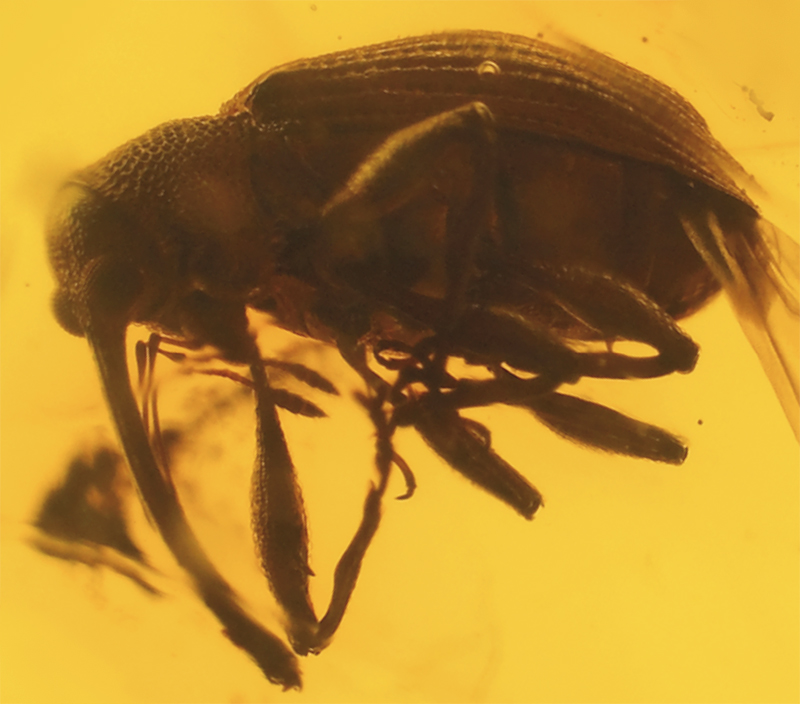 |
Weevil
Period: Oligocene
Age: 25 million years
Location: Dominican Republic
|
 |
Winged Ant
Period: Oligocene
Age: 25 million years
Location: Dominican Republic
Winged ants have two long wings 5 to 8 millimeters (1.9 to 3.1 in) in length. They build their nests close to sources of food and water. These ants have remained unchanged for millions of years. The fossil ant in 25-million-year-old amber shows that these insects have been remained the same for millions of years, in other words, they did not undergo evolution.
|
 |
Assassin Bug
Period: Cretaceous
Age: 100 million years
Location: Myanmar
The 350 million or so fossils unearthed have revealed that species are not descended from one another and that they never evolved. The assassin bug, as seen in the 100-million-year-old fossil below has come down to us completely unchanged to the present day. The fact that Darwinists still maintain that evolution took place, despite seeing millions of fossils that have never changed, clearly shows they are under a kind of magic spell of belief in this dogma. But the evolutionists’ endeavors have all been in vain, and 21st century paleontology has spelled the end of the theory of evolution.
|
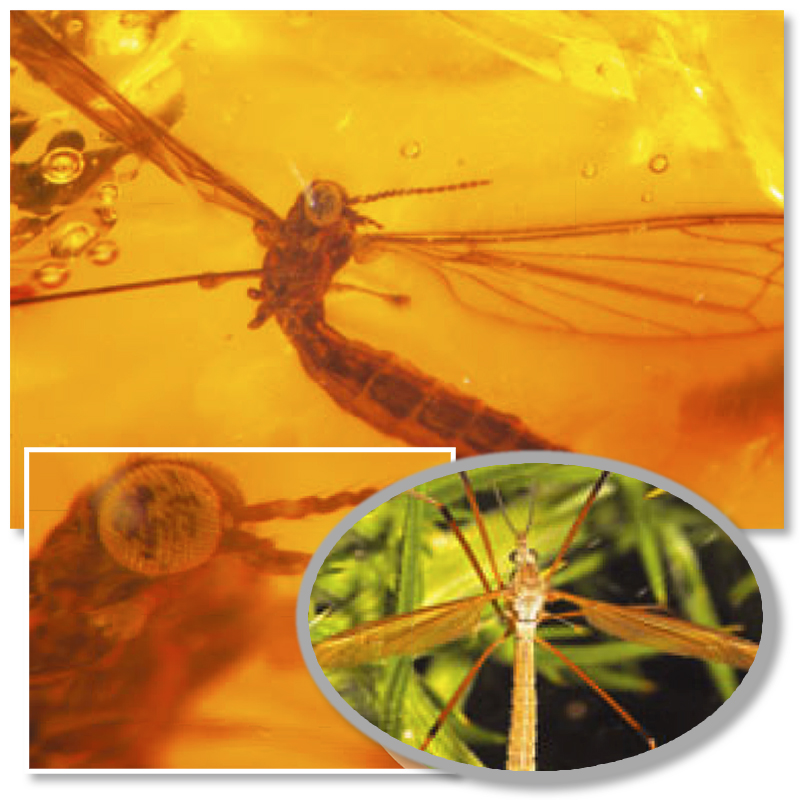 |
Crane Fly
Period: Oligocene
Age: 25 million years
Location: Dominican Republic
The body, antennae and the prefect structure in the compound eyes of this 25-million-year-old crane fly can all clearly be seen. The preservation of its soft tissue in amber for millions of years is powerful evidence that crane flies have never changed.
|
 |
Scelionid Wasp
Period: Eocene
Age: 50 million years
Location: Poland
Large or small, all living things possess rather superior characteristics and wide-ranging forms of behavior. This clearly shows that living things cannot come into being by chance, and that they are specially inspired and created entities.
|
 |
Dark-Winged Fungus Gnat
Period: Oligocene
Age: 25 million years
Location: Dominican Republic
This dark-winged fungus gnat is 25 million years old, defying the claims of evolutionists.
|
 |
True Bug
Period: Cretaceous
Age: 125 million years
Location: Brazil
Insects have remained as insects, spiders as spiders, fish as fish and birds as birds ever since the moment they were first created. The intervening millions of years have not led to any changes in life forms. Just like other life forms, this insect from the order Heteroptera has been created in a flawless manner. This 125-million-year-old fossil is just one of the many proofs that refute evolution.
|
 |
Barklouse
Period: Cretaceous
Age: 100 million years
Location: Myanmar
Barklice belong to the order Psocoptera. The earliest known fossils date back to the Permian Period (290 to 248 million years ago). The bark louse pictured lived 100 million years earlier, in the Cretaceous Period (144 to 65 million years ago). With their wings, eyes and other organs, barklice have remained unchanged for hundreds of millions of years and invalidate scenarios stemming from evolutionists' imaginations.
|
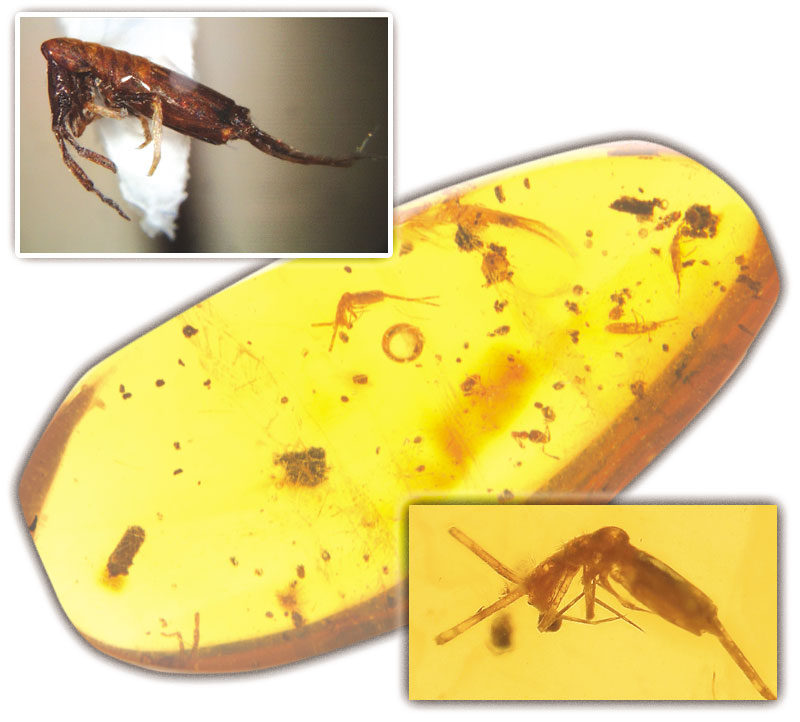 |
Springtail
Period: Oligocene
Age: 25 million years
Location: Dominican Republic
There is no difference between springtails that lived 25 million years ago and those alive today.
|
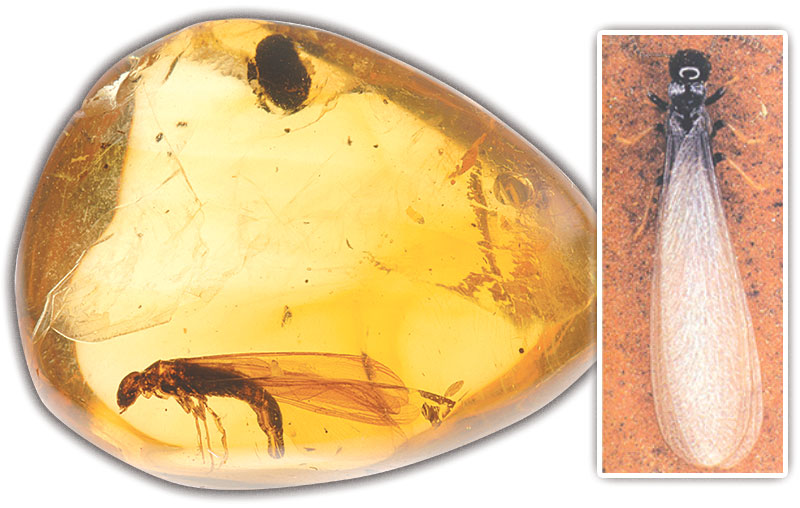 |
Winged Termite
Period: Oligocene
Age: 25 million years
Location: Dominican Republic
Although termites resemble ants, they actually possess very different characteristics and abilities. Termites have been living in colonies for millions of years and have come down to the present day with their structures totally unchanged. Termite fossils 250 million years old are one of the proofs of this. All the termites that have ever lived during the intervening millions of years have been identical to those living today. Just like worker termites that lived 250 million years ago, those living today engage in altruistic behavior, feed the larvae, soldiers and queens, and build nests many meters in size—despite being sightless. The characteristics of present-day termites also apply, without exception, to all termites that have ever lived.
The termite fossil in amber in the picture is 25 million years old.
|
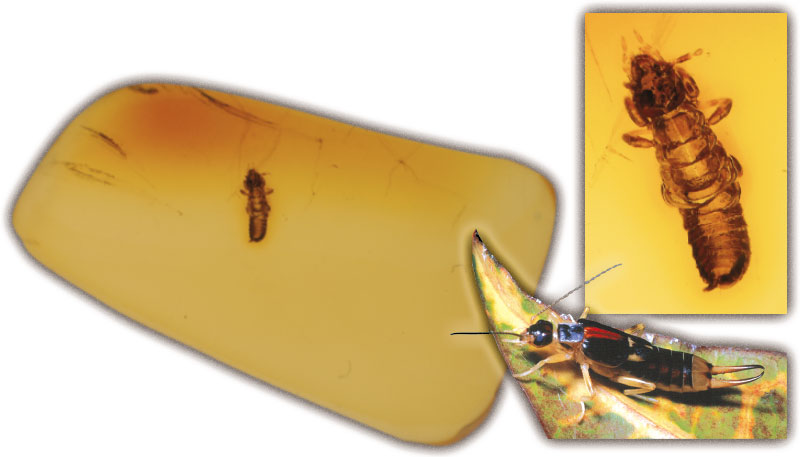 |
Earwig
Period: Oligocene
Age: 25 million years
Location: Dominican Republic
There are millions of fossils that literally silence Darwinism. One of the fossils that leave Darwinists utterly helpless is this earwig in 25-million-year-old amber. As with all other fossil findings, this fossil shows that evolution is invalid.
|
 |
Weevil
Period: Eocene
Age: 54 – 37 million years
Location: USA
Weevils, part of the Curculionidae superfamily, represent more than 60 separate species. When the fossil record is examined, it appears that these bugs have always existed as weevils, did not evolve from any other life form, have remained unchanged for tens of millions of years and never developed into any other species. One of the proofs is the weevil fossil pictured here. It is between 54 and 37 million years old, and identical to specimens living today.
|
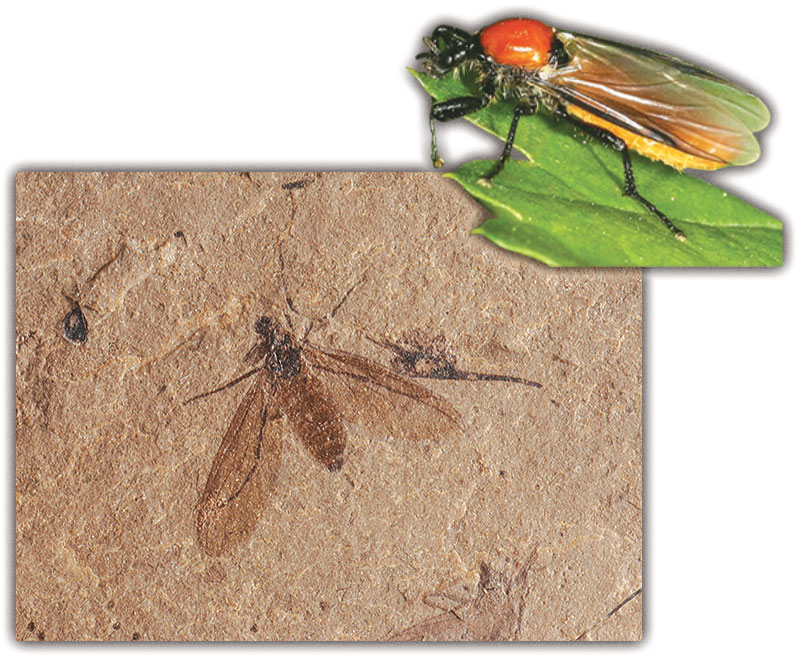 |
Marchfly
Period: Eocene
Age: 50 million years
Location: Canada
With its structure and appearace, which have not altered for tens of millions of years, the marchfly is one of the countless life forms that challenge the theory of evolution.
These insects, which average 3 to 12 millimeters (0.1 to 0.4 in) in length, emerge in the springtime, live close to the surface of the soil, and damage plants. The organisms belonging to this family are some of the oldest known flies.
|
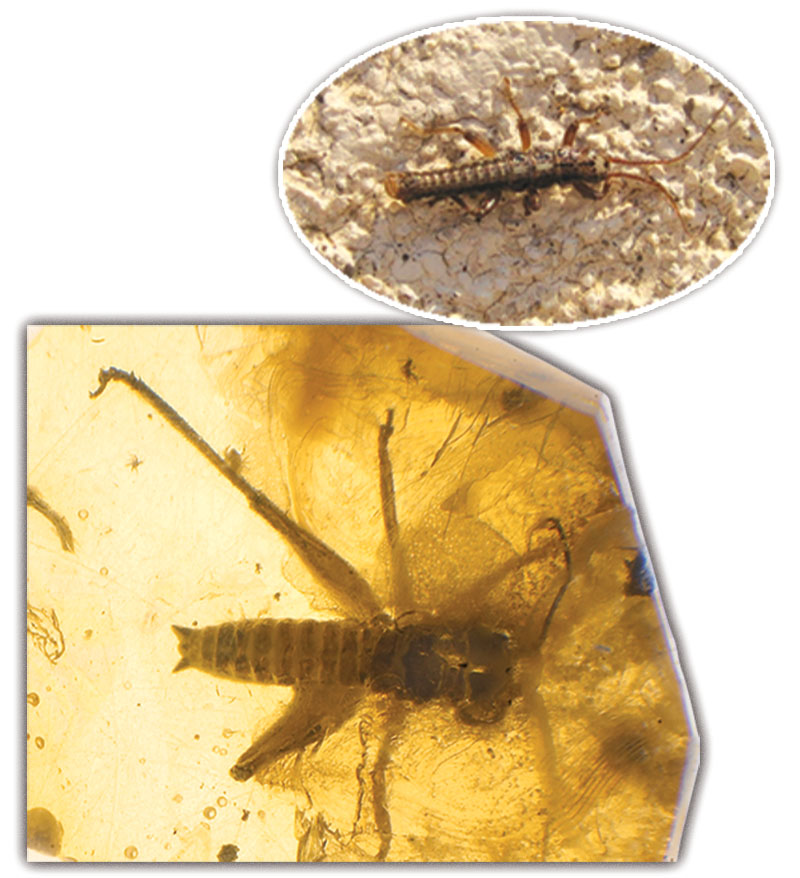 |
Walking Stick
Period: Eocene
Age: 50 million years
Location: Poland
One of the important features of these creatures, members of the family Phasmatidae, is their ability to change color, depending on light, temperature, humidity and even the abundance of food. This change comes about through an alteration in the density and location of pigment, or else through the formation of new pigment.* The 50-million-year-old fossil walking stick pictured was also able to change colors, just like specimens living today.
|
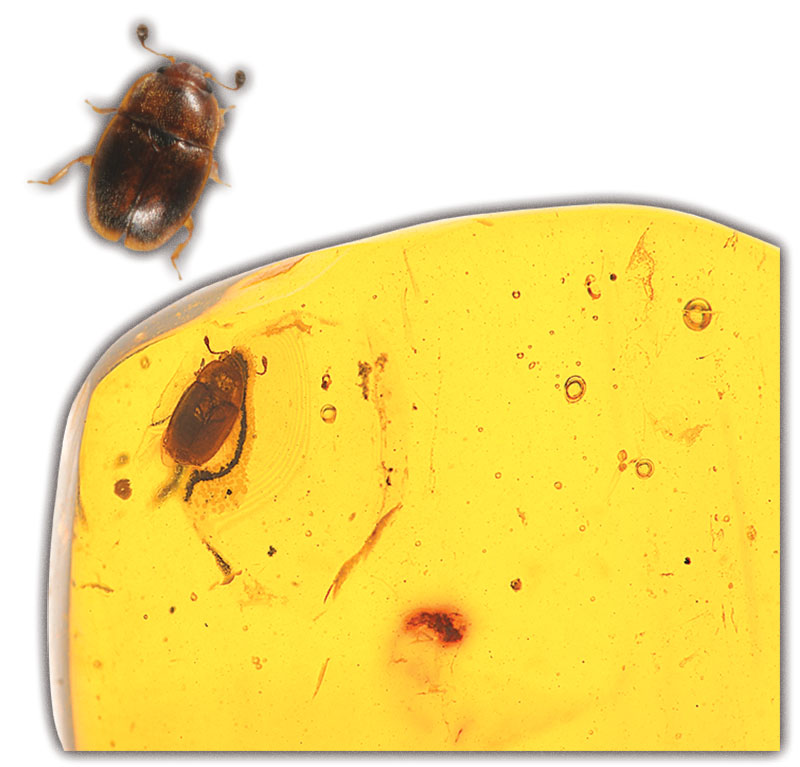 |
Sap Beetle
Period: Oligocene
Age: 25 million years
Location: Dominican Republic
Of those insects belonging to the family Nitidulidae (Coleoptera), only those living on flowers are regarded as pests. The great majority of species feed on pollen and sap. Coleoptera alive today have exactly the same characteristics as those that lived millions of years ago. This fact, confirmed by fossil discoveries, is an indication that the insects in question did not form in stages, in other words that they did not evolve.
|
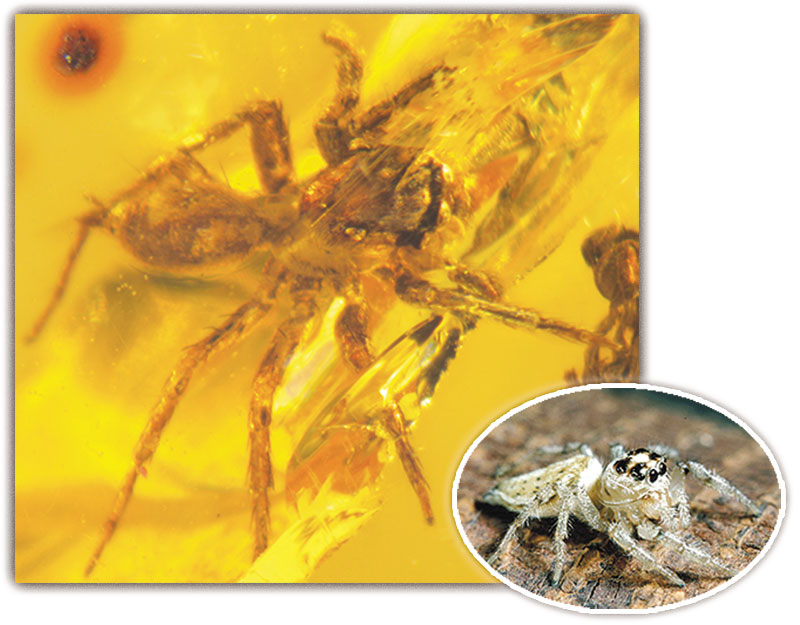 |
Spider
Period: Oligocene
Age: 25 million years
Location: Poland
Spiders are one of the most numerous groups in the animal kingdom and possess many miraculous properties. One of these properties is the knowledge of geometry inspired in them by God and the architectural marvels, their webs, which they construct using that knowledge. This 25-million-year-old spider fossil is identical to spiders living today, and this proves this life form was created in a moment with all its characteristics and that it has never changed.
|
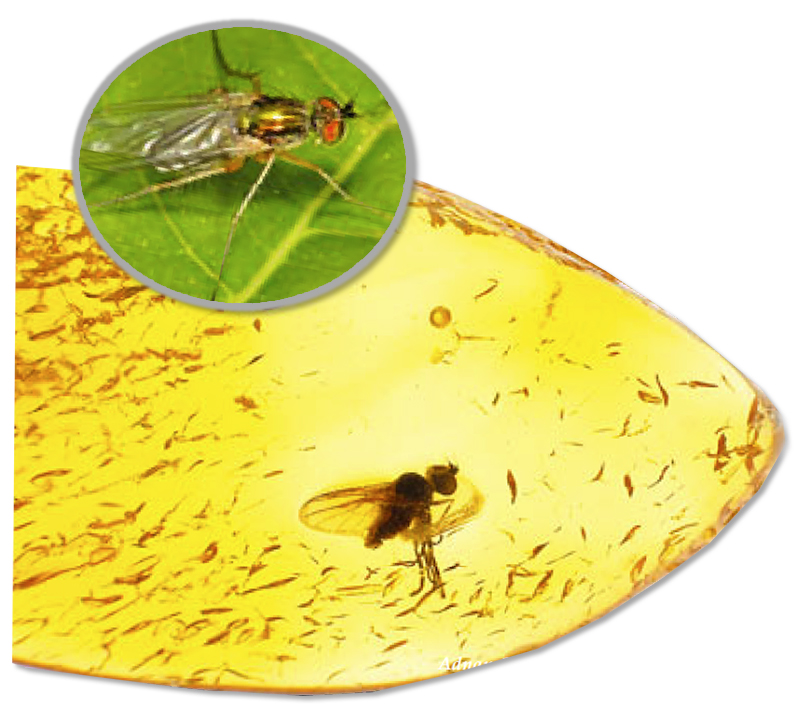 |
Long-Legged Fly
Period: Eocene
Age: 45 million years
Location: Russia
Like this long-legged fly pictured, the hundreds of fossils in this book (and the billions on Earth) are clear proofs that no such thing as evolution ever took place, and that living things emerged on Earth perfectly formed and in a single moment. In other words, they were created. Almighty God, Lord of the Earth and sky and all that lies between, created the entire universe and all the infinite number of entities, living and non-living, within it. Led astray by a preconception, evolutionists defend this theory in terrible ignorance.
One of the best responses to them is given by fossils, which clearly and indisputable reveal that evolution is a myth.
|
 |
Drangonfly
Period: Cretaceous
Age: 125 million years
Location: Brazil
One of the most important abilities of dragonflies is their enormous maneuverability. No matter at what speed or which direction it may be flying, the dragonfly can suddenly stop and head off again in the opposite direction. In a very short space of time, it can attain 40 kilometers/hour (25 mph), an astonishing speed for an insect. It is impossible to account for the magnificent way in which the dragonfly uses its wings by any model of gradual evolution. The wing represents a complete impasse for evolutionists.
|
 |
Snipe Fly
Period: Eocene
Age: 50 million years
Location: Poland
The basic claim made by Darwinism is that life forms developed in stages and supposedly advanced by way of evolution. Yet when we look at the concrete evidence we see no evidence to support this fictitious myth of Darwinism’s. Darwinism has not been confirmed even once by any scientific finding over the last 150 years or so. On the contrary, it has been refuted by each and every new discovery. One such finding is the 50-million-year-old fossil snipe fly in the picture. Like other species of fly, this fossil proves that snipe flies have never changed; in other words, that they did not evolve.
|
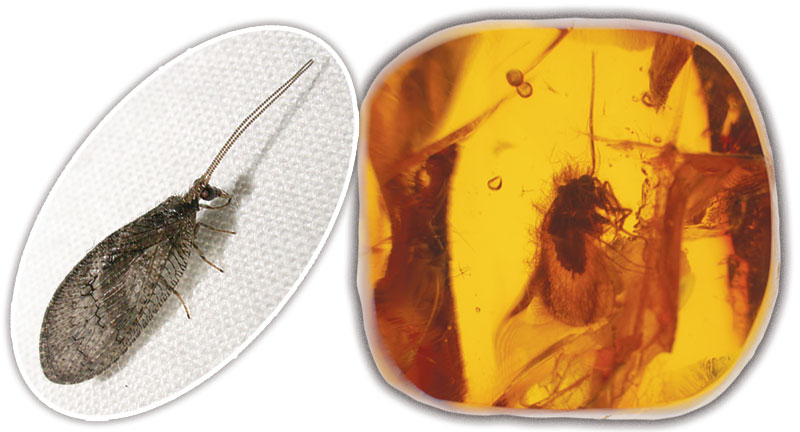 |
Brown Lacewing
Period: Cretaceous
Age: 100 million years
Location: Myanmar
The brown lacewing belongs to the family Chrysopidae, from the order Neuroptera. This life form is widely seen in North America and Europe, and has survived for hundreds of millions of years completely unchanged. Evolutionists claim that life forms gradually turn into other life forms through a series of gradual changes. But, as can be seen from this example, life forms have never changed since the moment they were first created.
|
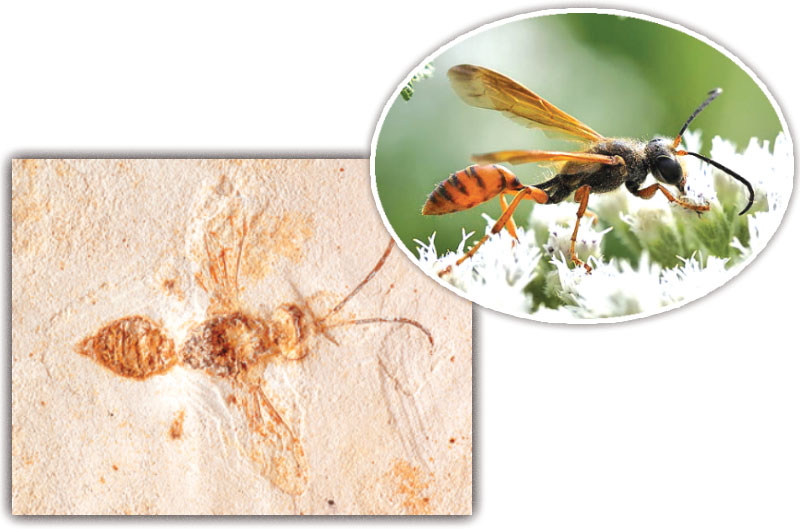 |
Wasp
Period: Cretaceous
Age: 125 million years
Location: Brazil
A. Brouwer, author of the book General Paleontology, summarizes the defeat suffered by Darwinism at the hands of fossils:
"One of the most surprising negative results of paleontological research in the last century is that such transitional forms seem to be inordinately scarce. In Darwin's time this could perhaps be ascribed with some justification to the incompleteness of the paleontological record and to lack of knowledge, but with the enormous number of fossil species which have been discovered since then, other causes must be found for the almost complete absence of transitional forms." (A. Brouwer, General Paleontology [translated by R. H. Kaye], Edinburgh & London: Oliver & Boyd, 1967, pp. 162-163)
Evolutionists do not need to "look for excuses," as Brouwer puts it, but to see the facts. Countless fossils, such as the 125-million-year-old wasp fossil pictured here, show that evolution never took place, and that living things are created.
|
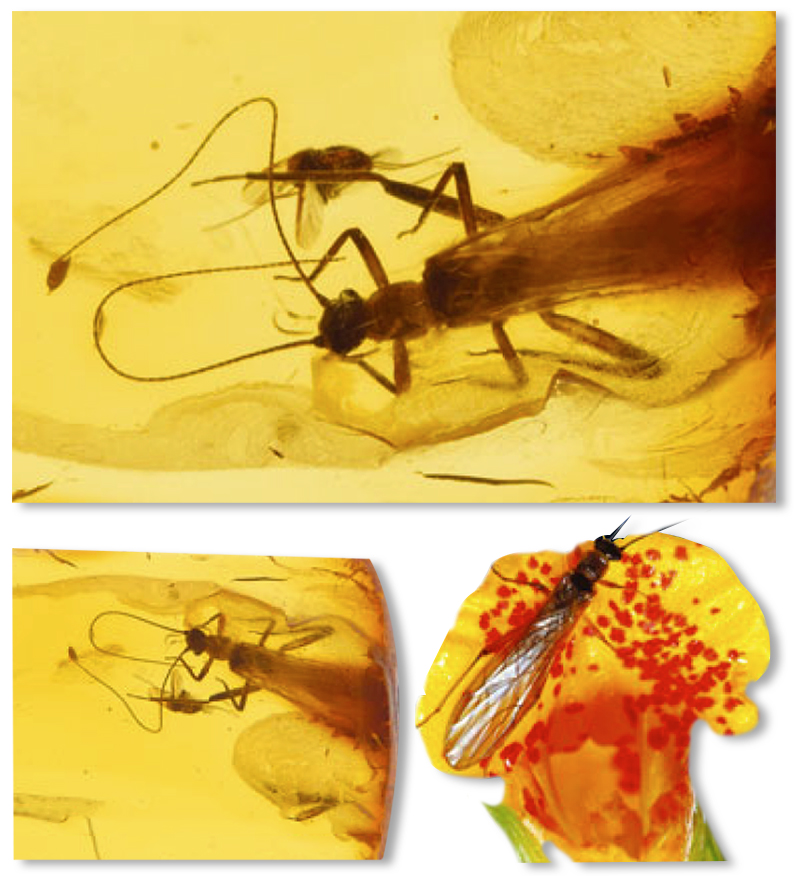 |
Stone Fly
Period: Eocene
Age: 50 million years
Location: Russia
Stone flies range between 5 and 10 millimeters (0.1 and 0.3 in) in length and have twolong antennae; their larvae are used as fishing bait. They too have remained unchanged for millions of years. This 50-million-year-old fossil stone fly pictured is identical to stone flies living today.
|
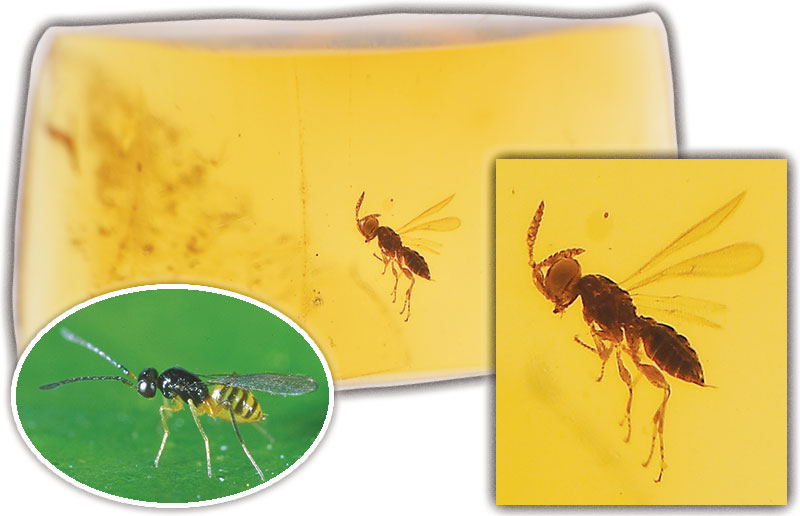 |
Mymarid Wasp (Mymaridae)
Period: Cretaceous
Age: 100 million years
Location: Myanmar
Pictured is a 50-million-year-old wasp preserved in Baltic amber. Like all other living things, wasps, which have remained the same for 50 million years, show that evolution never happened, and that God created them.
|
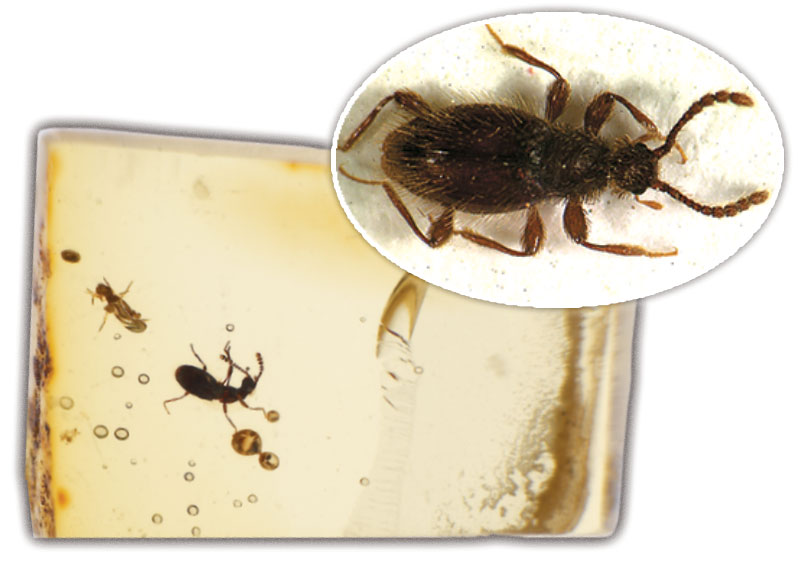 |
Ant-Like Stone Beetle
Period: Cretaceous
Age: 100 million years
Location: Myanmar
One hundred million years is a relatively long time for any life form’s completion of the supposed evolutionary development. If evolutionists’ views were accurate, then over the course of all that time, ant-like stone beetles should have turned into very different forms and should bear no resemblance to beetles still alive today. Yet despite the passage of millions of years, ant-like stone beetles—like all other life forms—have undergone not the slightest change. They were the same 100 million years ago as they are today, which makes any reference to evolution impossible.
|
 |
Scorpion
Period: Cretaceous
Age: 125 million years
Location: Brazil
There are 1,300 species of this particular animal, which has been living on Earth with the same features for 400 million years. They can survive for two days underwater, and hunt at night. The 125-million-year-old scorpion in the picture has exactly the same characteristics as those living today. Scorpions never evolved; God created them, too.
|
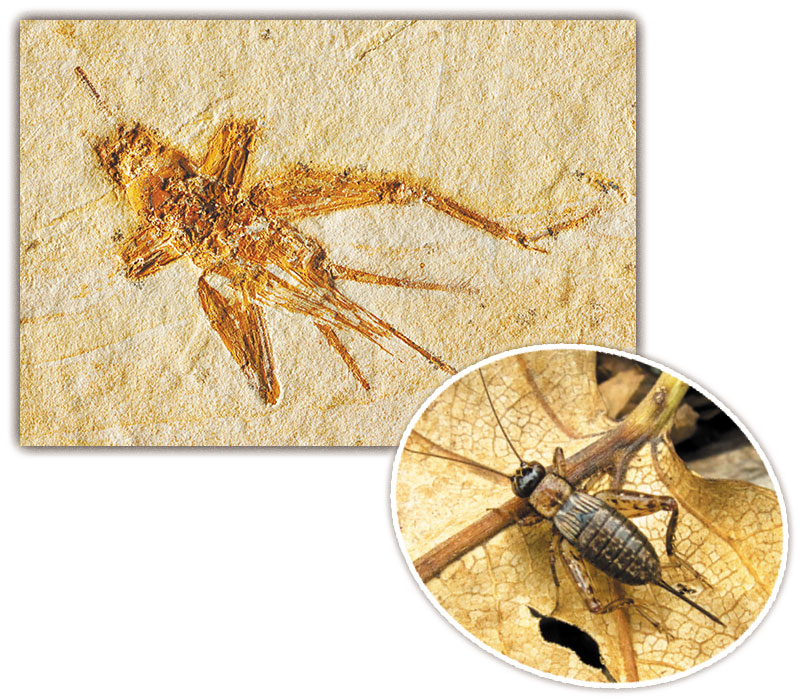 |
Ground Cricket
Period: Cretaceous
Age: 125 million years
Location: Brazil
Asked about the origin of insects, Darwinists relate a series of hypotheses totally devoid of any logic. Asked to prove these stories with some scientific findings or concrete evidence, they enter into a profound silence—because all the theoretical studies to date, and findings such as fossils, completely invalidate these claims.
One of the pieces of evidence invalidating evolutionists' claims is the 125-million-year-old ground cricket fossil illustrated here. This fossilized insect, identical in every respect to ground crickets alive today, refutes evolutionist claims that living things are in a constant state of change. Fossils show that living things tell us, "We never changed or evolved. We were created."
|
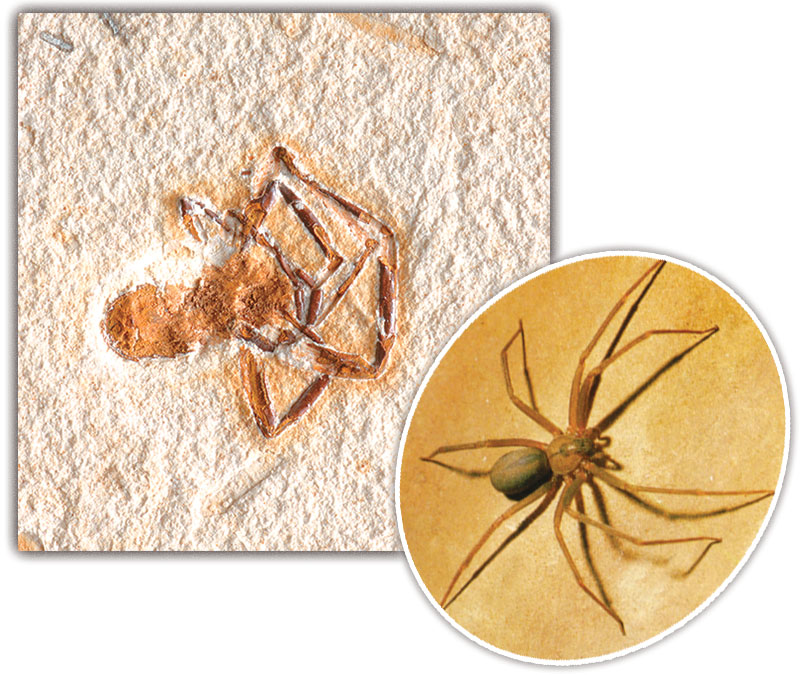 |
Spider
Period: Cretaceous
Age: 125 million years
Location: Brazil
The theory of evolution is entirely conjectural, devoid of any scientific criteria and based on no valid evidence. Moreover, it bases its entire claim on the illogical and unrealistic thesis that all living things in existence formed as the result of a succession of countless coincidences—something quite impossible.
Scientific research and investigations confirm this state of affairs. For example, examination of the fossil record shows that no process of the kind maintained by evolutionists ever happened. It can be seen that living things did not develop by way of a succession of changes, but that each one appeared suddenly with all its characteristics complete. This means that living things did not evolve, but were created.
|
|



























